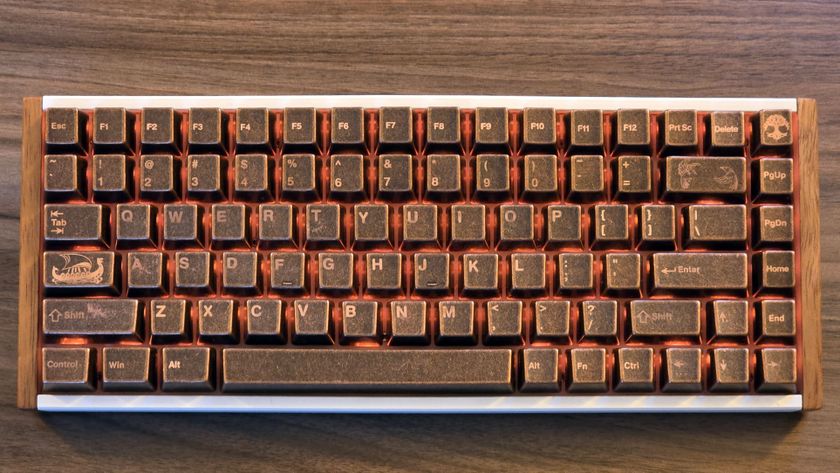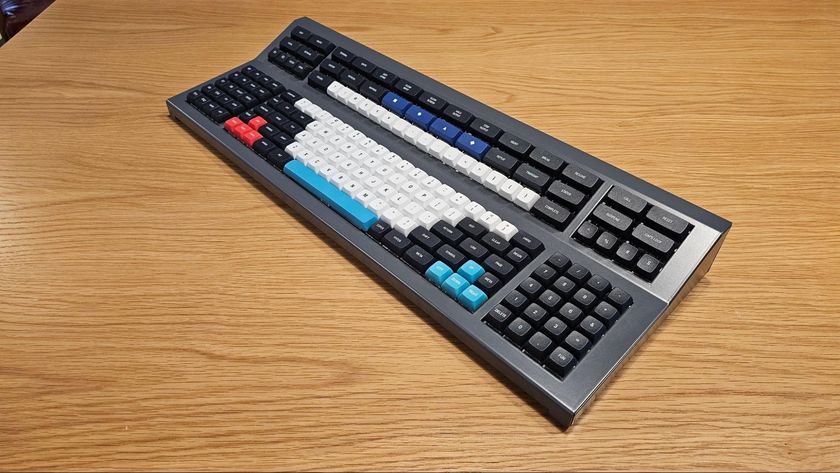Building A Liquid-Cooled MicroATX Gaming Monster
You don't need a massive case to cram in tons of computing muscle. With a little help from a few manufacturers, our excessively-overclocked GeForce GTX 580 SLI build is small enough to sit atop most desks (and smoke our $2000 SBM machine).
Overcoming Overclocking Ordeals: Asus’ Maximus IV Gene-Z
This editor always tries to keep his Sandy Bridge-based CPU core voltage at or below 1.40 V to assure longevity with above-ambient cooling. That usually means choosing 1.38 V for additional safety factor, though voltage fluctuations on some lower-range boards have occasionally still blown processors up over time. Even more of that built-in “safety factor” was subsequently added to our motherboard round-ups, taking that test voltage down to 1.35 V.
Our most recent System Builder Marathon revealed that an award-winning motherboard simply wasn’t able to cope with the increase from 1.35 V to 1.38 V, and that kind of mistake wouldn’t be tolerated for this build. Asus’ Maximus IV Gene-Z comes with a larger voltage regulator.

Assuming the same amount of current per PWM phase, the Maximus IV Gene-Z’s twelve-phase regulator would surely outpace that of the seven-phase product we had problems with in the SBM. As an advanced overclocking model, we’re actually counting on the Maximus IV Gene to have better-quality parts on each of its twelve phases.

Oh, and of course the board had to support SLI, which it does without breaking the Z68’s support for Lucidlogix's Virtu software and the Intel Quick Sync video enabled by it (even with our display natively attached to the discrete graphics cards).

Most enthusiasts think of microATX as a big, fat compromise. And yet, experienced overclockers are familiar with Asus’ smaller Gene line of “Republic of Gamers” motherboards, which incorporate the same design DNA as the company's full-sized ATX boards. Asus certainly doesn’t think of its product as lacking seriousness, providing a special USB cable that allows the system to be overclocked remotely, on the fly, by another machine system.
It’s also nice to see six SATA cables included with a motherboard that supports six internal drives.
Stay On the Cutting Edge: Get the Tom's Hardware Newsletter
Get Tom's Hardware's best news and in-depth reviews, straight to your inbox.
Current page: Overcoming Overclocking Ordeals: Asus’ Maximus IV Gene-Z
Prev Page The Smaller Footprint: Fractal Design’s Arc Mini Next Page Lightening The Load With Crucial And Seagate-
compton I really like this setup. The Maximus Gene-Z is very swank, and it's on my short list even though the last thing I need is more motherboards laying around.Reply
I was a huge proponent of uATX cases until I needed space for an Asus Essence STX and a Killer Networks 2100 NIC. I found a compromise with the Lian Li PC A05NB -- it's one of the smallest ATX cases around, not much larger than the uATX enclosure I was using prevously. The diminutive Gene-Z is perfection for uATX boards, and wouldn't be out of place in larger cases -- but it's nice that you were able to cram so much into such a modest enclosure. -
dogman_1234 Question: why does the Mobo choice have a 'bad voltage regulator?'Reply
Anyways. Love these kind of articles. Helps other users get more of what they assume. Keep it up Tom's. -
iam2thecrowe dogman_1234Question: why does the Mobo choice have a 'bad voltage regulator?'Anyways. Love these kind of articles. Helps other users get more of what they assume. Keep it up Tom's.it doesnt have a BAD voltage regulator, it just doesn't deliver enough stable power for overclocking much, nor do the VRM's have good cooling on them in that gigabtyte board. This was the assumption for the poor overclcking perfromance in the SBM.Reply -
dogman_1234 iam2thecroweit doesnt have a BAD voltage regulator, it just doesn't deliver enough stable power for overclocking much, nor do the VRM's have good cooling on them in that gigabtyte board. This was the assumption for the poor overclcking perfromance in the SBM.How does one avoid this?Reply -
aznshinobi Man... I was thinking custom water cooling loop when I saw this. I guess not. Not a huge fan of manufacturer pre-made loops, I find them expensive for their price. I.E All the Corsair Hydro series products.Reply -
crisan_tiberiu Question: is the overclocked i7 passing the Intel Burn Test @ Extreme Preset? I am asking this because my 2600k cant pass this test @ 4,4 Ghz, it simply shuts down (thermal protection kicks in, no errors :))Reply -
ceps Love this build, i love mATX builds, maybe the most interesting build I've seen here. Good Job!!Reply -
Crashman crisan_tiberiuQuestion: is the overclocked i7 passing the Intel Burn Test @ Extreme Preset? I am asking this because my 2600k cant pass this test @ 4,4 Ghz, it simply shuts down (thermal protection kicks in, no errors )Eight threads Prime95 small FFTs for max CPU.dogman_1234How does one avoid this?On the Gigabyte board you could probably see that half of the voltage regulator had no heat sink, but some crap boards have sinks so it's only a little helpful. Otherwise you have to pick a board you like, then use your search engine to find out what other people are getting from their overclocks.Reply
In the case of that board, it was stable at 1.35V, fluctuated quite a bit at 1.36V, and dropped all the way down to 1.36V when it was set to 1.38V. -
crisan_tiberiu CrashmanEight threads Prime95 small FFTs for max CPU.On the Gigabyte board you could probably see that half of the voltage regulator had no heat sink, but some crap boards have sinks so it's only a little helpful. Otherwise you have to pick a board you like, then use your search engine to find out what other people are getting from their overclocks.In the case of that board, it was stable at 1.35V, fluctuated quite a bit at 1.36V, and dropped all the way down to 1.36V when it was set to 1.38V.sry, i retract what i was saying :( i tried Burn Test again (with 20C room temp not with 30 :P ) and it passed @ 4,5 GHz). I have an AsRock MB and used "Load optimized overclock settings for 4,4Ghz, and i dont know why, it sets the PLL voltage to 1,75V, witch is very high. I have set the PLL to 1,55 V and now it works great @ 4,5 GHz ... What can i say, i am always learning something :PReply
-
AppleBlowsDonkeyBalls A Core i7-3930K sounds good for the next $2000 build if it's out by then. GTX 580s are horrible bang-for-buck, so I'd step down to two Radeon HD 6970s for 2560x1600 gaming. It should be comparable in gaming to this one and much faster in multi-threaded. It remains to be seen how much X79 motherboards will cost, but I think a great system could be made on that 'budget'.Reply













